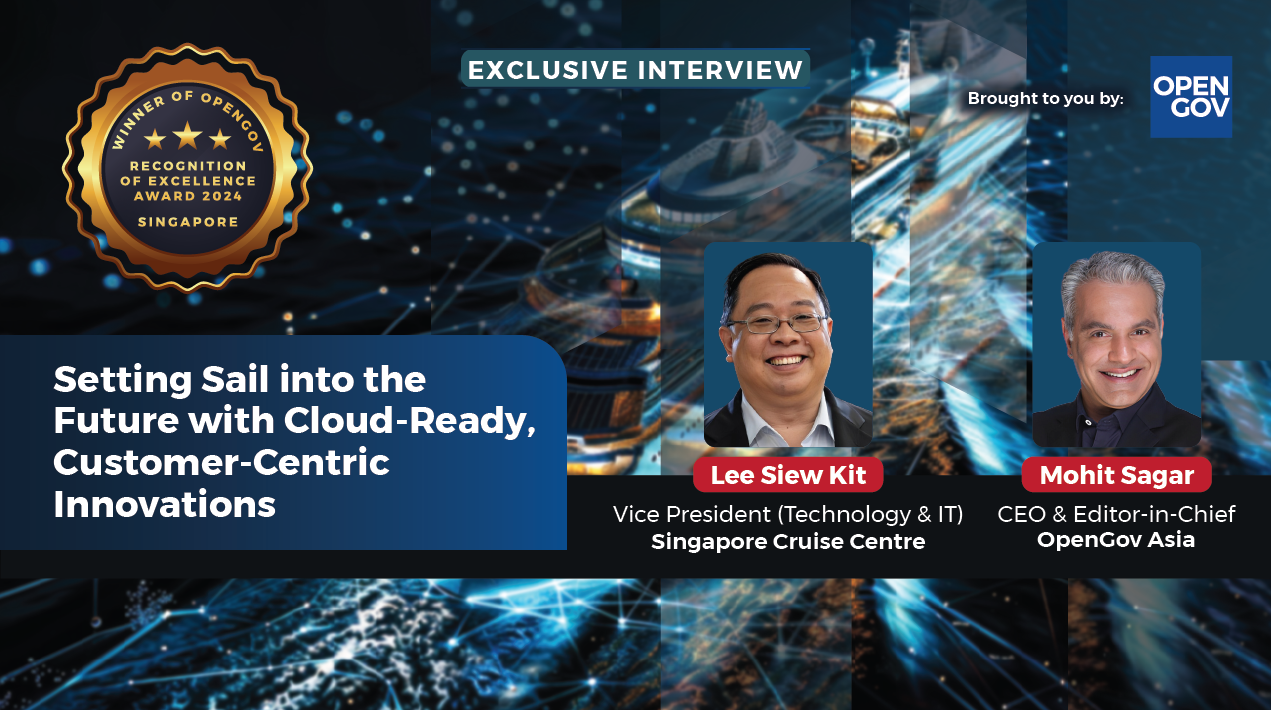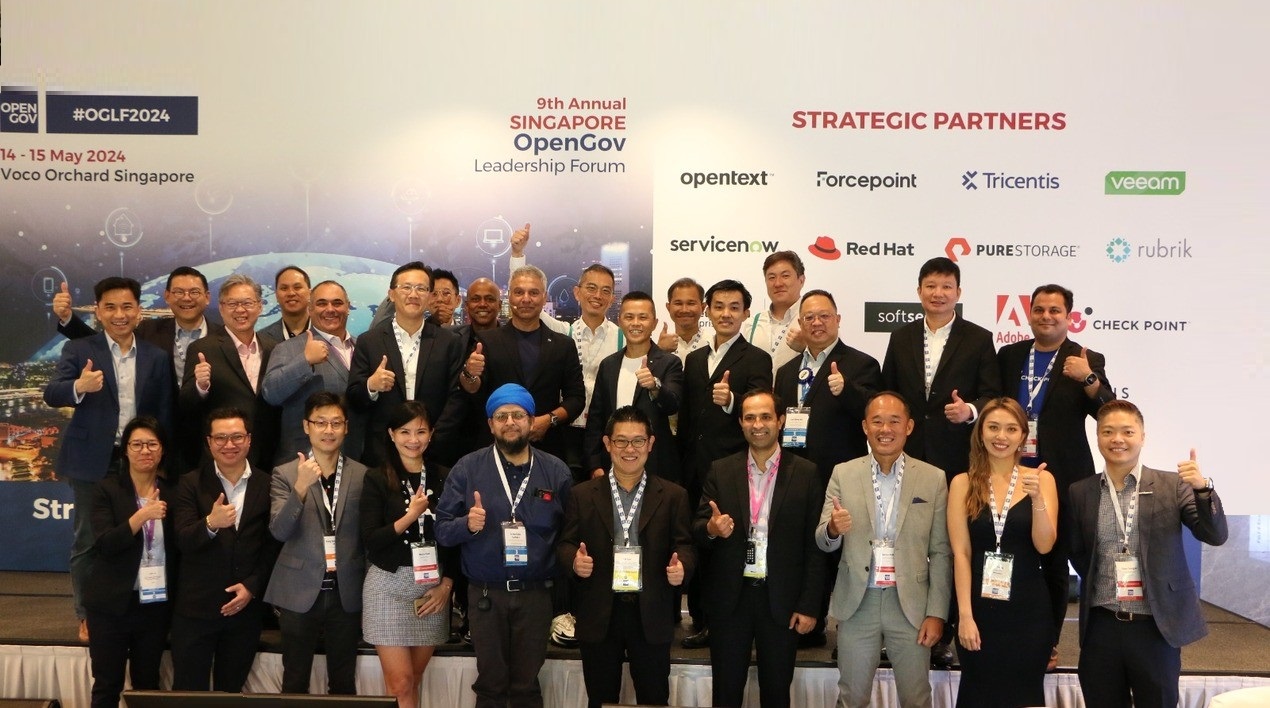
|
Getting your Trinity Audio player ready...
|
This is Day 1 of The 9th Annual Singapore OpenGov Leadership Forum 2024. You can read about Day 2 here.
Singapore has emerged as a global frontrunner in digital transformation, marking its position through substantial investments in digital infrastructure and skill development by the government, alongside businesses’ swift integration of new technologies. This transformation has elevated Singapore to a benchmark for innovation and entrepreneurship, drawing attention worldwide.
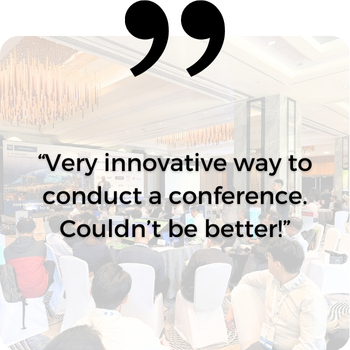 Embarking on a comprehensive digital transformation journey, Singapore has been actively revamping various sectors of its economy, spanning government, businesses, education, healthcare, and more. The Smart Nation Initiative is a testament to this commitment, aiming to leverage technology to create a more interconnected and technologically advanced society. This initiative encompasses enhancing digital infrastructure, implementing data analytics, and advocating the use of emerging technologies.
Embarking on a comprehensive digital transformation journey, Singapore has been actively revamping various sectors of its economy, spanning government, businesses, education, healthcare, and more. The Smart Nation Initiative is a testament to this commitment, aiming to leverage technology to create a more interconnected and technologically advanced society. This initiative encompasses enhancing digital infrastructure, implementing data analytics, and advocating the use of emerging technologies.
The pandemic has been a catalyst for digital transformation in Singapore, with 72% of CEOs witnessing accelerated growth of their new digital business models during this period. The government supported numerous initiatives and with continued efforts, Singapore has the potential to lead in digital transformation, giving rise to new local champions in the process.
Central to Singapore’s digital evolution is its profound reliance on technology, notably IT, to enhance efficiency, foster innovation, and elevate the overall quality of life. The government has taken measures to bolster Singapore’s digital landscape, including investments in high-speed broadband and data centres, nurturing a skilled workforce through initiatives like SkillsFuture, and cultivating a business-friendly environment conducive to adopting digital technologies.
 The country has been investing in upskilling its workforce to meet the digital economy’s demands. According to a report, registered learners from Singapore have shown high percentiles for business, technology, and data science skills, which are critical for the digital economy.
The country has been investing in upskilling its workforce to meet the digital economy’s demands. According to a report, registered learners from Singapore have shown high percentiles for business, technology, and data science skills, which are critical for the digital economy.
Despite that, the emphasis on skills development has not been limited to the workforce but extends to the education system. Singapore’s learners have shown high interest in AI-related skills, which are increasingly important in the digital economy.
For instance, the Singapore Digital Office has been instrumental in driving government initiatives to expedite digital adoption in the community, particularly in light of the phased recovery post-COVID-19.
This movement towards digitalisation in Singapore is set to commence with a focus on two key groups: seniors and small businesses, underscoring the inclusivity and breadth of Singapore’s digital transformation efforts.
The 9th Annual Singapore OpenGov Leadership Forum 2024 on 14-15 May 2024 at Voco Orchard Singapore, brought together digital leaders from Singapore’s public and financial sectors. The forum facilitated discussions, idea exchanges and strategic planning to seize upcoming digital opportunities to enhance Singapore’s resilience and innovation by embracing technologies.
Welcome Address

Mohit Sagar, CEO and Editor-in-Chief at OpenGov Asia, acknowledges that Singapore is a benchmark of innovation and progress, earning the accolade of Asia’s smartest city. Spearheaded by visionary leaders, Singapore has embraced digital transformation across all sectors, solidifying its position as a global leader in smart city endeavours.
“With world-class infrastructure encompassing smart transit systems, sustainable energy solutions, and effective urban planning, Singapore leverages cutting-edge technologies like artificial intelligence and the Internet of Things to enhance public services, optimise resource allocation, and improve inhabitants’ quality of life,” Mohit observes.
Singapore’s smart city initiatives are distinguished by a citizen-centric approach, emphasising inclusivity, accessibility, and social balance. By fostering innovative collaborations between the public and private sectors, Singapore sets a benchmark for other cities in Asia and globally.
This commitment to innovation has earned Singapore international recognition for its achievements in smart city innovation, placing it at the forefront of the global urbanisation movement. As a result, Singapore serves as a standard and an inspiration for other cities seeking to leverage technology for sustainable urban development.
Global complexity, marked by multidimensional and ever-changing factors such as inflation, geopolitical risk, talent acquisition and technological disruptions, presents challenges for organisations and policymakers.
To navigate these complexities, organisations can leverage cutting-edge technology solutions:
- Big Data Analytics: Utilise large datasets to gain insights into consumer behaviour, market dynamics, and global trends, enabling organisations to identify opportunities and risks.
- AI and Machine Learning: Enhance predictive analytics, automate tasks, and streamline operations, enabling organisations to forecast market trends and increase operational efficiency.
- Blockchain Technology: Improve traceability, security, and transparency in international supply chains and financial transactions, simplifying international payments and ensuring regulatory compliance.
- Internet of Things (IoT): Gather real-time data on international operations, logistics, and product performance, enabling predictive maintenance and inventory management optimisation.
- Cloud Computing: Facilitate collaboration and data sharing among geographically dispersed teams and stakeholders, enabling organisations to expand globally and respond quickly to market changes.
- Effective IT Strategy: Develop a clear IT strategy aligned with organisational goals to guide technology investments and decision-making, ensuring adaptability to changing market dynamics and optimising value generation.
- Enhanced Visibility: Employ technology, processes and people to improve visibility into operations, enabling stakeholders to make informed decisions, streamline processes, and promote continuous improvement.
- Cybersecurity: Proactively address cyber threats by investing in solid cybersecurity measures, including regular security assessments, employee training, and advanced threat detection and response technology.
 In its current form, the government’s AI Singapore programme catalyses AI innovation across industries, drawing top global talent through various initiatives. Mohit believes that continued investments in talent, ecosystem creation and R&D will define Singapore’s AI future.
In its current form, the government’s AI Singapore programme catalyses AI innovation across industries, drawing top global talent through various initiatives. Mohit believes that continued investments in talent, ecosystem creation and R&D will define Singapore’s AI future.
“Singapore prioritises addressing ethical, legal, and social issues to ensure responsible AI development and application, aiming to propel sustainable economic expansion and enhance living standards,” Mohit explains. “This approach creates a conducive environment for AI development, fostering innovation and attracting top talent, ultimately underpinning Singapore’s position as a global leader in AI.”
In today’s increasingly digital landscape, information, insights, trends and projections are indispensable, offering a competitive edge through personalisation and prediction. However, the reliability and accuracy of these analytics and patterns hinge entirely on data – only good data can ensure precise analysis and informed decision-making.
“Data is the lifeblood of an organisation, coursing through every aspect and vital for its survival. However, akin to blood, it requires meticulous protection and purification to maintain its health and effectiveness.”
Mohit is firmly convinced that organisations must adopt cybersecurity measures as cyber threats evolve in the digital era. Ransomware attacks and IoT vulnerabilities pose significant risks, while AI-driven solutions can strengthen defences.
“Investing in cybersecurity, including regular assessments and advanced threat detection, is crucial for protecting digital assets,” Mohit says. “IT must be seen as an investment, not an expense!”
Moreover, a holistic approach to cybersecurity, including technological solutions, organisational policies, and employee training, is the need of the hour. Organisations must stay updated with the latest cybersecurity trends and threats and continuously assess and improve their cybersecurity posture.
Achieving comprehensive security necessitates collaborative efforts across various entities rather than relying solely on individual or single-entity endeavours. Cooperation between government and companies, as well as among different organisations, is crucial in addressing cybersecurity challenges effectively. Moreover, the significance of international cooperation in combating cyber threats cannot be overstated, highlighting the importance of international efforts.
In closing, Mohit reiterates Singapore’s global leadership in innovation, particularly in smart city initiatives and AI advancement. He underscores the need for continued investment in talent and research to shape Singapore’s AI future and stresses the importance of holistic cybersecurity measures.
Collaborative efforts between government, companies and international partners to ensure comprehensive security and progress in the digital era is a must and is epitomised by events like the Singapore OpenGov Leadership Forum.
Technology Case Study: Elevate Your Data Security Strategy with Automation and Visibility

Nick Savvides, Senior Director of Strategic Business and Field Chief Technology Officer for APAC at Forcepoint, underscores the critical role of data security in building a Smart Nation in Singapore. He highlights the importance of secure and effective data use in policy-making and government service delivery, noting the government’s active efforts to strengthen its data security regime.
In Singapore, data security is governed by the Personal Data Protection Act 2012 No. 26 of 2012, which regulates personal data collection, use, and disclosure. This act has an extraterritorial effect, applying to organisations collecting, using, or disclosing personal data in Singapore, regardless of their physical presence. The public sector is governed by separate rules under the Government Instruction Manual 8 (IM8) and the Public Sector Governance Act.
As regulations tighten and data breaches increase, businesses face a challenge in protecting their most valuable asset: data. Organisations must maximise their data security efforts, including integrating automation for efficient monitoring and response and enhanced visibility to effectively detect and mitigate potential threats.
One practical approach is to automate data classification, prioritisation, and orchestration with AI. By automating the data classification process, businesses can ensure that sensitive data is correctly identified and prioritised for protection. AI can analyse data usage patterns and classify them based on sensitivity and importance, allowing businesses to focus their security efforts on the most critical data.
Another critical strategy is automating real-time policy enforcement based on user behaviour. User behaviour is a crucial indicator of potential security threats, and by automating policy enforcement, businesses can quickly identify and respond to suspicious activities. This includes monitoring user access to sensitive data, detecting unusual login attempts, and flagging potential insider threats.
ML-based content recognition can also enhance data security by analysing data content to identify malware, phishing attempts, and other cyberattacks. Using ML-based content recognition, businesses can improve their data security measures and proactively protect against potential threats.
Forcepoint, as the leading user and data security cyber security company, is entrusted to safeguard organisations while driving digital transformation and growth. Their solutions adapt to how people interact with data in real-time, providing secure access while enabling employees to create value.
“In our company, Forcepoint is dedicated to protecting and securing our customers’ rapidly evolving digital world. We achieve this by providing a Data-first Secure Access Service Edge (SASE) solution. SASE integrates comprehensive security functions with network capabilities to support the dynamic needs of modern organisations,” explained Nick. “Our Data-first approach ensures that security is ingrained into every aspect of data usage, from access to storage and transmission, safeguarding against evolving threats and vulnerabilities. With Forcepoint’s SASE solution, organisations can confidently navigate the complexities of the digital landscape, knowing that their data is protected at every step.”
In Conversation with: Driving Quality at the Speed of Innovation… Is It Possible?

Juliet Lim, Managing Director and Regional Business Testing & RPA Change Management Lead for Digital Transformation at OCBC emphasises the transformative impact of digital innovation on the financial sector. She explains that financial institutions harness cutting-edge technologies to streamline operations, enhance customer experiences, and maintain a competitive edge.
Specifically, AI and robotic process automation (RPA) are crucial in driving cost savings and operational efficiency by automating repetitive tasks, enabling financial professionals to concentrate on strategic, high-value endeavours. “AI-driven analytics and decision-making tools improve risk management and investment strategies, ultimately leading to better financial outcomes.”
Juliet stresses the importance of cultivating an innovative culture within financial institutions. Innovation, she says, is not about merely deploying new technologies; it’s about nurturing an environment where creative thinking and agility are fundamental aspects of the organisation’s identity.
Recognising the challenges of digital disruption, OCBC prioritises innovation to stay ahead in technological advancements. They place a strong emphasis on experimentation and learning from failures to foster continuous improvement and adaptability in a dynamic market.
Juliet also points out the critical importance of robust security and compliance measures. OCBC ensures adherence to regulatory standards while adopting new technologies and safeguarding sensitive financial data against cyber threats.
This dual focus on innovation and security is essential for building trust with customers and stakeholders, ensuring that digital transformation efforts do not compromise data integrity and privacy.
Juliet illustrates these points by sharing real-world examples from OCBC’s digital transformation journey, showcasing how technology has delivered tangible benefits. Successful RPA projects have enhanced operational efficiency by reducing manual workload and errors and AI applications have optimised asset management processes, resulting in more accurate forecasts and improved investment decisions.
Juliet highlights future trends in the financial sector, notably the increasing impact of fintech collaborations. partnerships between traditional financial institutions and fintech startups will spur innovation and open new avenues for growth. The disruptive potential of blockchain and cryptocurrencies will reshape traditional economic models, providing alternative methods for transactions and asset management. It is vital to anticipate and adapt these trends to maintain competitiveness in the dynamic financial landscape.
Digital transformation is essential in enhancing customer experience. OCBC uses advanced data analytics to gain deeper insights into customer preferences and behaviours, allowing for more personalised services and products. This customer-centric approach improves satisfaction and loyalty and drives revenue growth by meeting the specific needs of different customer segments.
In this landscape, developing a skilled workforce equipped to handle the demands of digital transformation is critical. OCBC is committed to continuous learning and professional development, ensuring that employees are proficient in the latest technologies and methodologies. This investment in human capital is essential for sustaining innovation and maintaining a competitive edge in the digital era.
Additionally, as the focus on sustainability grows among investors, financial institutions must align their strategies with environmental, social, and governance (ESG) criteria while leveraging technological advancements. Digital tools facilitate comprehensive ESG analysis, empowering organisations to make informed and responsible investment decisions in line with sustainability goals.
In steering digital transformation, effective leadership emerges as a cornerstone, pivotal in navigating complex changes. Visionary leaders are essential, inspiring and guiding organisations toward their goals by articulating a clear vision, fostering collaboration, and ensuring alignment across all levels of the business.
Ultimately, cutting-edge technologies enable financial institutions to streamline operations, elevate customer experiences, and sustain a competitive edge. Fostering an innovative culture within these institutions goes beyond technology adoption, necessitating a culture ingrained with creative thinking and agility and led by leaders willing to take risks, think outside the box and empower everyone.

Damien Wong, Senior Vice President of Asia Pacific & Japan at Tricentis, asserts that in today’s dynamic business environment, the traditional notion of “business as usual” (BAU) has given way to a relentless pursuit of innovation and advancement. This shift is driven by the breakneck speed of technological progress, the ever-evolving expectations of consumers, and the growing emphasis on security and compliance in business practices. Consequently, IT organisations must adapt, strive to innovate rapidly, deliver superior user experiences, and uphold strict security and compliance standards.
Innovation is now not merely a choice but an imperative for survival and prosperity in any sector. Businesses that need to innovate risk obsolescence, ceding ground to more nimble competitors. Organisations must cultivate a culture that fosters experimentation, embraces risk-taking, and learns from failures to succeed in this environment.
Beyond fostering an innovative culture, IT organisations must prioritise effective communication, consistency, and leadership. These elements are crucial for balancing the demands of daily operations with pursuing creative endeavours. This requires a robust framework that enables efficient resource allocation, risk management, and investment in new growth areas.
Damien posits that Artificial Intelligence (AI) and the future of quality automation are propelling IT and business endeavours forward. AI-powered quality engineering solutions offer myriad benefits, including cost savings, resource optimisation, and enhanced quality, all while accelerating innovation. These solutions leverage intelligent automation, integrating AI technologies such as natural language processing (NLP), machine learning, and computer vision. This advanced automation goes beyond essential task execution, enabling decision-based processes.
The adoption of AI-powered quality engineering solutions is transforming various business functions. For instance, intelligent automation can optimise workflows and automate manual tasks in the HR department, enabling HR teams to focus on strategic activities like talent acquisition and employee engagement. This enhances efficiency and fuels innovation by freeing time for creative endeavours and adapting to evolving business needs.
AI also plays a pivotal role in IT asset management, automating tasks, optimising resources, and bolstering security. This automation streamlines operations enhances decision-making, and elevates asset management, unlocking new business possibilities.
Technology Case Study: For-Evolution of Zero Trust –> Data Resilience

Raymond Goh, Vice President of Systems Engineering, Asia & Japan at Veeam, emphasises the importance of building trust in data. He explained that internal devices are trusted in a secure network environment and can connect freely. However, external devices are considered untrusted, and access between internal and external devices is controlled and authenticated.
According to Raymond, zero trust means applying strict controls to everything all the time. No device or connection is automatically trusted based on its network status. In this context, he described the evolution from “Zero Trust to Data Resilience”, highlighting the need for continuous authentication and authorisation mechanisms to ensure data security and trustworthiness. This approach ensures that resource access is based on the user’s identity and authorisation level, enhancing overall data security and resilience.
Zero Trust Data Resilience addresses a significant gap in Zero Trust models, particularly in data backup and recovery areas. This concept emphasises the importance of secure data backup and recovery systems, ensuring that the stored data remains safe even if the backup management system is compromised. Additionally, it highlights the need for flexible deployment options, allowing organisations to align their architecture with their specific requirements.
Raymond explains that Zero Trust operates on the assumption that threats exist outside and inside the network, treating every access attempt as a potential threat. It emphasises continuous authorisation and authentication, limits lateral movement, and restricts privileged access to sensitive data.
Data Backup and Recovery in Zero Trust models provide comprehensive guidelines and solutions for data protection. Zero Trust Data Resilience (ZTDR) extends this by focusing on backup and recovery systems. ZTDR emphasises segregating Backup Software and Backup Storage for ransomware protection and requires continuous authentication and verification for access to backup systems. Implementing ZTDR helps organisations mitigate insider threats and ensures the security and resilience of critical systems and data.
Raymond mentions that achieving the Zero Trust Data Resilience goal involves several steps and considerations. Here are some key aspects to consider:
- Understanding Zero Trust Data Resilience: Zero Trust Data Resilience (ZTDR) is an extension of the Zero Trust model that focuses on data backup and recovery systems. It assumes that breaches are inevitable and emphasises continuous authentication and verification of access to backup systems.
- Data Segmentation: Dividing data into separate segments enhances security and reduces risks. This involves categorising data based on its sensitivity and importance and applying appropriate security measures to each segment.
- Immutability’s Critical Role: Unchangeable data plays a significant role in protecting against cyber threats. Immutable data is resistant to modification, ensuring that data remains unaltered even in the presence of threats.
- Least Privileged Access: Implementing the least privileged access ensures that users and devices only have the necessary permissions to perform their tasks, reducing the risk of unauthorised access and data breaches.
- Continuous Authentication and Authorisation: Continuous authentication and authorisation with Identity and Access Management (IAM) best practices are essential for safeguarding backup environments.
- Proactive Validation: Regularly validating and verifying the security of backup systems helps to detect and address potential threats before they cause significant damage.
- Operational Simplicity: Ensuring operational simplicity in the backup and recovery process is crucial for efficient operations and alignment between IT and security teams
“By incorporating these principles into the data protection strategy, the organisation can achieve Zero Trust Data Resilience, which will help minimise risks, fortify data protection, and improve the organisation’s security posture,” concluded Raymond.
Fireside: Revealing the IT Landscape: How End-to-End Solutions Drive Visibility Across Core Operations, Asset Management, Portfolio Strategy, and Security
Mohit Sagar, CEO & Editor-in-Chief at OpenGov Asia, underscores the indispensable significance of Core IT within organisations, serving as the technological backbone that facilitates operational efficiency, drives strategic goals, boosts productivity, encourages collaboration, and plays a pivotal role in talent acquisition and retention. According to Mohit, IT constitutes the foundational platform that underpins the operations of every company.
Core IT manages and maintains IT systems, including communication, inventory, data, and management information systems. It plays a significant role in customer relationship management by providing tools and systems for capturing and analysing customer interactions, enhancing customer experience, and improving productivity. It is integral to the organisation’s culture, shaping its identity and guiding member behaviour.
As digital operations become increasingly complex and customer expectations continue to grow, organisations must streamline processes and cross-functional workflows while being cost-conscious. The rise of AI and automation is enabling this change.

Chen Tongcai, Head of Public Sector at ServiceNow, explained that Service Operations (ServiceOps) is a people-centric, technology-enabled approach that leverages AI and automation to streamline incident resolution, improve operational efficiency, enhance customer experience, and enable data-driven decision-making, aligning teams’ efforts with business objectives for long-term success.
A comprehensive view of the technical landscape is crucial for organisations to ensure smooth functionality, align IT investments with business objectives, and foster long-term success. Core IT service operations, strategic portfolio management, adoption of ServiceOps, and synergy between ITOM and ITSM contribute to this comprehensive view.
Core IT service operations ensure that IT infrastructure runs smoothly by providing better visibility into system performance and user experience, implementing processes covering activities like regular updates, incident management, change management, problem management, configuration management, and service level management.
These processes are essential for managing and delivering IT services, infrastructure, and support to internal and external stakeholders, streamlining operations, improving efficiency, reducing costs, and ensuring consistent quality of services. These processes are necessary for managing the complex and ever-changing IT landscape to be smooth.
For example, event management is a process that manages events throughout their life cycle, including detecting events, monitoring state changes, and sequencing and categorising events to determine the best course of action. This ensures that all operations run smoothly, and each event is handled in a timely manner with the appropriate response. Incident management focuses on managing incidents, requests, communication, and many incident management activities. Having an effective incident management process creates a positive perception of the IT organisation and builds trust with users.
ServiceOps aims to streamline the incident resolution process by leveraging automated actions, such as diagnosis and remediation, and workflows, reducing manual toil and ensuring only the right teams are pulled in to focus on resolution, improving operational efficiency and downtime.
Chen opines that operational velocity, achieved through automation, is essential for the modern digital enterprise. By harnessing a range of automation technologies and strategies, businesses can streamline processes, boost efficiency, and elevate customer experiences.
Key areas include Business Process Automation (BPA), Robotic Process Automation (RPA), Low-Code Automation (BPM), Artificial Intelligence (AI) Automation, Process Mining, automation-driven efficiency and agility, data-driven automation, customer experience enhancement, business process improvement, and Industry 4.0.
End-to-end IT solutions provide organisational visibility by offering insights into IT operations, resource utilisation, and risk exposure. They enable better decision-making and strategic planning by providing a comprehensive view of IT infrastructure and services. IT Operations Management (ITOM) provides:
- Visibility into business services and underlying infrastructure.
- Improving service health.
- Introducing automation to increase service delivery speed.
- Optimising service delivery spend.
Observability focuses on proactive insights and understanding system behaviours and dependencies by leveraging various data sources such as logs, metrics, and traces.
“Workflow solutions eliminate unnecessary steps and enhance business efficiency, with Field Services Management Software playing a crucial role as the backbone of modern businesses, enabling organisations to manage complex processes and bring various systems and software products under one roof,” Chen explained.
ITOM software solutions help organisations understand and control their IT landscape, ensuring efficient and compliant use across the organisation. These various aspects of end-to-end IT solutions work together to provide comprehensive visibility and streamline operations for organisations.
In Conversation with: Leveraging Hybrid Cloud to Fuel Singapore’s Vision for a Smart Nation
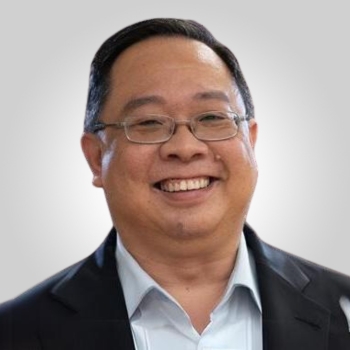
Lee Siew Kit, Vice President (Technology & IT) at Singapore Cruise Centre, emphasises the pivotal role of hybrid cloud solutions in advancing Singapore’s smart nation initiatives. These solutions are instrumental in driving innovation and facilitating digital transformation across industries. By integrating private cloud, public cloud, and on-premises infrastructure, hybrid cloud architectures ensure efficiency, agility, and resilience.
They enable seamless resource scaling in response to demand, ensuring optimal performance and cost-effectiveness. Technologies such as IoT, AI, and data analytics further enhance decision-making processes, showcasing the transformative potential of hybrid cloud solutions in Singapore’s digital landscape.
The hybrid cloud approach offers strategic advantages in building a smart nation, allowing sensitive data to remain on-premises while leveraging the scalability and innovation of cloud platforms. This addresses concerns related to data sovereignty and regulatory compliance, making hybrid cloud solutions essential for driving digital innovation, collaboration, and citizen empowerment as Singapore progresses with its smart nation strategy.
“Most agencies have a mix of public and private clouds. In an office environment, it is easy to cross-pollinate, but a remote workforce often struggles to share data between the two unless using an effective hybrid approach,” explains Lee. “This hybrid environment ensures data security, accessibility, and consistency, catering to a variety of users’ needs.”
To innovate and thrive in the digital era, governments, corporations, and citizens must collaborate and leverage the power of hybrid cloud solutions. A hybrid cloud offers a flexible and inclusive model that enables businesses to maintain control of operational data while leveraging the public cloud for insights and analytics.
The combination also encourages cloud modernisation and supports major business initiatives. By embracing a hybrid cloud strategy, organisations can address challenges such as data gravity, sovereignty, compliance, cost, and interdependencies with other systems. This approach promotes faster innovation, reduces complexity, and enhances agility in managing applications and data across various environments.
Organisations can benefit from the scalability and innovation of cloud platforms while retaining control over sensitive data by implementing a hybrid cloud strategy. Hybrid cloud solutions combine private cloud, public cloud, and on-premises infrastructure to provide a flexible and inclusive model that allows businesses to maintain control of operational data while leveraging the public cloud for insights and analytics. This approach enables faster innovation, reduces complexity, and enhances agility in managing applications and data across various environments.

Dr Ravinder Sachdev, Chief Clinical Informatics Officer at Tan Tock Seng Hospital, highlights the transformative impact of cloud technology on healthcare. Cloud solutions provide a centralised and accessible platform for patient data, enabling healthcare professionals to make informed decisions and deliver effective treatments. Cloud-based platforms support telemedicine, offering remote medical access and improving healthcare accessibility and efficiency.
In today’s healthcare landscape, cloud computing plays a pivotal role, seamlessly integrating with every aspect of patient care. From bustling urban hospitals to remote clinics, its impact is profound and ubiquitous.
“Cloud computing has revolutionised the healthcare industry by granting doctors access to complete patient narratives, enabling them to make informed decisions based on comprehensive data,” explains Dr Ravinder. “Patient histories, previously isolated, have found residence in virtual clouds, providing doctors with a wealth of information that can be analysed to improve patient care and outcomes.”
Cloud solutions offer features such as viewing patient history, printing and emailing patient history, and accessing laboratory, immunisation, and vitals data. These platforms enable healthcare professionals to access patient information from various sources, making it easier to provide personalised care and monitor patient progress.
The use of cloud computing in healthcare has also led to the development of telemedicine, which allows remote medical access for mild-symptom patients, disabled individuals, and those distant from hospitals.
Patient data flows effortlessly, facilitated by wearable devices that transmit real-time information to cloud servers, where predictive algorithms analyse and interpret the data. For instance, specialists located miles apart can now collaborate effectively, reviewing MRI scans stored securely in the cloud and delivering diagnoses promptly. Cloud-based platforms support virtual consultations, distant diagnostics, and even remote surgeries, making healthcare more accessible and efficient.
“Cloud computing is the cornerstone of healthcare’s digital transformation,” Dr Ravinder is convinced. “It’s not just about storing data; it’s about creating an interconnected ecosystem that empowers healthcare professionals to provide higher quality care and patients to take control of their health
Dr Ravinder explains that the interoperability of electronic health records further enhances patient care, ensuring that medical professionals have a comprehensive understanding of each patient’s health history. Cloud computing has evolved into a powerful tool, enabling healthcare providers to paint detailed and holistic pictures of patient health, transcending traditional boundaries of care.
Both speakers underscored the critical role of resilience in their respective sectors, underscoring the importance of hybrid and multi-cloud solutions for innovation and secure operations in intelligent nation and healthcare contexts.
During the discussion, an important query was raised concerning the cultivation of resilience against threats within organisations. The question focused on the type of organisational culture required to tackle emerging challenges such as quantum computing and its potential repercussions on existing encryption methods.
In response, Lee Siew Kit elaborated on a comprehensive approach to cultivating a resilient organisational culture. He explained that it involved a multifaceted and nuanced strategy, which included the adoption of advanced technologies, continuous upskilling and the fostering of a proactive security mindset.
“Cultivating a security culture requires leadership to set the tone from the top, implementing policies that prioritise cybersecurity, encouraging open communication about vulnerabilities, and rewarding proactive behaviour,” Lee said. “This supports innovation while maintaining vigilance against threats.”
Moreover, right from the start, organisations must prioritise continuous education and training for all employees, regardless of their technical expertise, emphasising that cybersecurity is a collective responsibility within the organisation.
Despite the challenges posed by quantum computing to existing encryption methods, it also presents opportunities for the development of more robust cryptographic techniques. Organisations should actively embrace technological advancements. Staying informed about advancements and integrating them into existing security frameworks is crucial for staying ahead of emerging threats.
“To address quantum computing specifically, adopt a layered security approach; not relying solely on encryption but also implementing additional measures like multi-factor authentication, continuous monitoring, and anomaly detection systems,” was Lee’s advice. “This creates a more resilient security posture that can adapt to emerging threats.”
Dr Ravinder Sachdev added, “In healthcare, the integration of robust security protocols is even more critical due to the sensitive nature of patient data. We must ensure that our security measures evolve alongside technological advancements. This includes not only upgrading our encryption standards but also ensuring that our data handling practices comply with the latest regulations and best practices.
Establishing a security-conscious culture within healthcare entails providing comprehensive training to all staff members, including medical professionals and administrative staff, to effectively identify and address security threats. Furthermore, integrating AI and machine learning technologies can significantly improve the capacity to detect and mitigate threats promptly.
“By having the capacity and the training to analyse patterns and detect anomalies indicative of security breaches, these technologies enable swift and efficient responses to potential risks,” Dr Ravinder feels.
Another audience member asked Dr Ravinder about the challenges associated with the multi-cloud approach, expressing concerns about the seamless transition between different cloud platforms and the potential issues with resiliency.
Dr Ravinder acknowledges the complexities inherent in the multi-cloud approach and emphasised the importance of adopting a clear multi-cloud strategy. Organisations need to carefully select cloud providers based on their individual strengths and ensure compatibility and synergy among/different cloud environments to effectively mitigate these challenges.
Technology Case Study: Enhancing Agile Development with Generative AI and Open Technologies

Gunasekharan Chellappan, General Manager at Red Hat, recognises the need for enterprise tools that boost developer productivity and drive rapid growth, noting the increasing integration of citizen developers into enterprise application development to bridge this gap.
As this trend unfolds, there’s a growing need for ways to streamline the development process. Skilled developers and citizen developers alike are turning to low-code platforms, which simplify complexities and allow developers to focus on business logic, facilitating the rapid creation of high-quality applications.
Various new low-code application development platforms combine attractive, advanced user interfaces (UIs) with the promise of “doing much of the work for you”. Instead of coding applications from scratch, these visual development platforms allow developers with varying skills to focus on business goals rather than technology. This results in reduced complexity, less effort, and increased developer productivity, leading to speedier projects, increased satisfaction, and leaner budgets for the C-suite.
The compelling business benefits of low-code tools have propelled them toward mainstream adoption. However, in their emphasis on simplicity, low-code tools often need to catch up to ensure seamless enterprise application development.
Organisations acknowledge the pivotal role of collaboration in fostering innovation, aware that a collaborative culture unleashes the full potential of employees, encouraging heightened energy, productivity and adaptability among team members. This sense of collective effort cultivates a community-oriented atmosphere, enhancing employee satisfaction and reducing stress levels. Additionally, organisations benefit from openly discussing challenges, and gathering valuable learning opportunities in the process.
As organisations embark on the digital journey, automation plays a pivotal role in overall adoption and achieving associated objectives. It speeds up processes, reduces errors, minimises manual intervention and integrates systems and databases, leading to operational efficiency.
Gunasekharan illustrated the power of data-driven automation, showcasing its capacity to analyse data from various sources and offer invaluable insights for informed decision-making. He underscored automation’s role in breaking down silos, facilitating business agility in adopting new processes, systems, and technologies.
He underlined the importance of effectively utilising data-driven automation in businesses, outlining the following key steps:
- Select the appropriate automation processes, as not all methods are suitable for automation.
- Communicating the benefits of automation and addressing concerns about job displacement and needing to adapt to new technologies can address resistance to change.
- Implementing strong security measures to protect sensitive data in automated systems.
- Ensuring that new automation technologies integrate smoothly with existing IT infrastructure.
He also notes that automation plays a crucial role in ensuring cost optimisation through several mechanisms. One such mechanism is early fraud detection, where automated systems can swiftly identify suspicious activities or anomalies in financial transactions, thereby minimising potential losses.
Automation also aids in compliance by continuously monitoring operations and transactions against established regulations and standards. This ensures adherence to legal requirements and industry best practices, mitigating the risk of costly penalties or sanctions.
Moreover, automation enables proactive responses by swiftly identifying and addressing issues before they escalate, thus minimising the impact on operations and finances and mitigating any reputational damage.
“Overall, the integration of automation technologies offers a plethora of benefits that enhance operational efficiency and boost cost efficiencies,” Gunasekeran asserts. “This makes it a necessity rather than an option.”
Fireside: Revolutionising Endpoint Management: From Challenges to Innovations
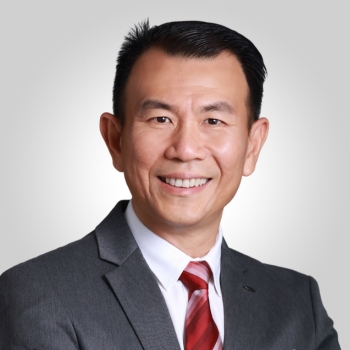
Nick Lim, Vice President of APAC at Tanium, appreciated the enthusiasm of the participants who gathered to explore innovative solutions for revolutionising endpoint management practices.
He highlights the critical role that endpoint management plays in maintaining a secure and efficient IT infrastructure, especially in the face of rapidly evolving digital landscapes. Endpoint management is a crucial aspect of maintaining a well-functioning and secure IT infrastructure, especially in today’s rapidly evolving digital landscape.
Traditional methods of managing endpoints have proven to be inefficient and lacking in critical areas such as visibility and control. To address these challenges, Nick observes that there is a growing need for innovative solutions that revolutionise endpoint management practices.
One key solution that has emerged to meet this need is unified endpoint management (UEM). UEM solutions enable organisations to monitor and manage all endpoints connected to their network from a single interface, making them more efficient than legacy endpoint management tools. These solutions provide a central, unified view of all devices connected to a network, offer analytics into device health and usage, enable admin configuration of device policies and peripheral settings, and allow admins to keep devices, apps, and operating systems up to date with patches.
“When choosing an endpoint management solution, there are several key criteria to consider,” he feels.
Scalability is crucial, as solutions should be able to grow with an organisation, accommodating an increasing number of endpoints and evolving security requirements. Ease of use is also important, as endpoint management solutions should be user-friendly, allowing users of all technical backgrounds to manage their devices effectively. Integration is another key criterion, as the solution should integrate seamlessly with other security tools and systems for optimal effectiveness.
Looking towards the future, the outlook for endpoint management is promising, with several key trends shaping the industry. UEM is expected to become more prevalent, with the report predicting that by 2025, over 90% of clients will use cloud-based UEM tools, up from 50% in 2022.
Increased automation is another significant trend, with security tasks becoming more automated to reduce human effort and allow more time for strategic work. Integration with AI and ML will play a crucial role in enhancing threat detection and response capabilities.
The adoption of Zero Trust Architecture (ZTA) is also expected to expand, with organisations maintaining strict access controls regardless of a user’s or device’s location. Behavioural analytics and monitoring will play a crucial role in identifying potential risks within the organisation, and cloud-based endpoint management tools will become increasingly important as more organisations move to cloud-based solutions.
Nick believes the future of endpoint management looks bright, with innovative solutions and emerging technologies driving significant advancements in the industry. By embracing these trends and implementing the right endpoint management solutions, organisations can ensure that their IT infrastructure remains secure, efficient, and adaptable to the evolving digital landscape.
The convergence of these trends will create a more integrated and automated approach to endpoint management, enabling organisations to protect their endpoints and data better while improving operational efficiency and reducing costs.
Technology Case Study: Building a Resilient Data Infrastructure for AI Initiatives
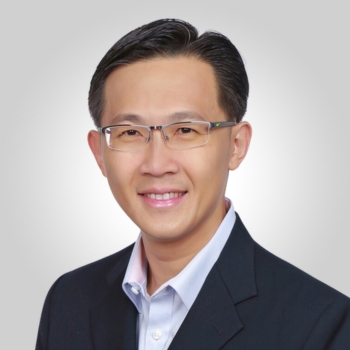
Lam Kuet Loong, Principal Technologist ASEAN & Greater China at Pure Storage, notes Singapore’s ambition to lead in artificial intelligence (AI) and underscores the importance of a robust and adaptable data infrastructure to achieve this goal. He pointed to the government’s significant investments in cloud-based systems, such as the Government on Commercial Cloud (GCC) platform, which serves as a central hub for local agencies to access AI capabilities effectively.
“To strengthen its data infrastructure, Singapore must prioritise developing sustainable energy sources like solar and hydrogen, implementing eco-friendly practices, and enhancing international connectivity,” Lam explained. “These initiatives will solidify Singapore’s position as a frontrunner in the Asia Pacific and global markets, particularly amidst the current surge in generative AI technologies.”
In alignment with this vision, the Data Science and Artificial Intelligence Division (DSAID) within the Government Technology Agency supports agencies by fostering internal data science skills, devising data strategies, and establishing necessary data infrastructure. Operating in agile and results-oriented teams, DSAID focuses on data-driven policy-making, increased productivity, and the delivery of more targeted services.
Moreover, collaboration with industry leaders is underway to advance AI applications and supercomputers, ensuring Singapore remains at the forefront of technological innovation and can leverage cutting-edge technologies for sustainable growth and global competitiveness.
Singapore has positioned itself as a pivotal data hub in Asia, boasting robust international and regional connections, minimal risk of natural disasters, and widespread digital technology adoption, hosting 60% of the region’s data centres.
Additionally, the nation has made significant investments in nurturing its AI talent pool, with plans to double its local workforce in this field to over 15,000 individuals, supported by various initiatives including scholarships, training programmes, and efforts to attract top global AI talent.
The objective is to cultivate a strong pool of AI experts, including data scientists, machine learning engineers, and researchers, who can fuel innovation and meet the increasing demand for AI-driven solutions across diverse industries. This commitment is part of the government’s overarching strategy to establish itself as an AI leader and ensure widespread adoption of AI across all sectors.
Lam believes that AI infrastructure offers several benefits for AI operations and organisations, with scalability as a key advantage. Scalability allows for easy operation adjustment based on demand, especially with cloud-based AI/ML solutions, ultimately enhancing the system’s overall value and performance, particularly in cost-revenue analysis.
Some key benefits of AI include:
- Cost reduction: AI can automate tasks, reducing manual labour and operational costs. By streamlining operations and reducing human error, AI can enhance efficiency and positively impact the bottom line.
- Enhanced decision-making: AI can analyse large datasets and generate insights for more informed, data-driven decisions. Through better strategic planning, this can optimise processes, identify cost-saving opportunities, and improve revenue generation.
- Customer experience and revenue growth: AI-powered technologies like chatbots and recommendation systems can enhance customer experience, driving revenue growth and customer loyalty.
- Predictive analytics: AI can analyse historical data and make accurate predictions, optimising inventory management and supply chain operations.
- Productivity and innovation: AI can augment human capabilities, enabling employees to focus on higher-value tasks. This can lead to the development of new products and services, improving competitive advantage. 6. Scalability and flexibility: AI-driven systems can be easily scaled to handle increasing workloads without major infrastructure changes, allowing for rapid and efficient expansion.
- Risk mitigation: AI can help identify and mitigate operational and financial risks, saving costs associated with legal penalties and reputational damage.
Automation is another significant advantage of AI infrastructure. Automating repetitive tasks reduces errors and accelerates deliverable turnaround times, boosting efficiency and productivity within the organisation.
Nevertheless, Lam acknowledges that AI infrastructure faces challenges, particularly concerning the volume and quality of data requiring processing. Given the substantial amounts of data necessary for learning and decision-making, traditional storage and processing methods may struggle to manage the scale and complexity of AI workloads.
Additionally, real-time analysis and decision-making pose another challenge, as they require not only quick but also efficient data processing to meet the demands of dynamic environments and time-sensitive operations.
To tackle these challenges effectively, Lam suggests implementing a comprehensive approach to building, deploying, and maintaining AI models within organisations. This entails incorporating several key components, including robust data storage solutions for organising and managing large volumes of digital data, efficient data management systems for maximising data utilisation and deriving analytical insights
Machine learning frameworks can be utilised for developing and validating ML models, while machine learning operations (MLOps) ensure the seamless production, maintenance, and monitoring of ML models throughout their lifecycle.
“Organisations can address these challenges and requirements with applications like Pure Storage, which enables quick deployment, scalability, and enhanced efficiency,” Lam reveals, highlighting how Pure Storage improves consistency and security through proactive management and support, ultimately helping organisations deploy applications closer to data sources and gain actionable insights.
Power Talk: Rethink Cybersecurity: Leap Confidently in the Age of AI
Mohit Sagar observes that organisations in Singapore are increasingly aware of the need for proactive measures to protect sensitive data and vital infrastructure due to the growing complexity and frequency of cyberattacks.
Moreover, the rapid adoption of artificial intelligence has further highlighted the importance of cybersecurity, as systems are more likely to face threats from hostile AI models, especially those controlled by AI commands.
To gain deeper insights into the landscape, Mohit engaged in discussions with four senior executives from renowned technology companies in Singapore, delving into topics such as cybersecurity and strategies for organisations to navigate the era of artificial intelligence with confidence.

Jon Lau, Director of Scientific IT Wing, ITSS and Chief Information Security Officer Agency for Science, Technology and Research (A*STAR), noted that in Singapore itself, firms could deploy a multi-layered security architecture, real-time threat intelligence, and an active threat prevention methodology to mitigate risks and fortify cyber defences effectively.
Defence-in-depth encompasses a comprehensive strategy that includes physical, technical, and administrative dimensions to defend against various cyber threats. As a multi-layered approach, it ensures that even if one facet is compromised, additional systems are in place to prevent unauthorised access to sensitive information.
Multi-layered security architecture is a comprehensive approach to cybersecurity that involves implementing multiple layers of security controls to protect an organisation’s network and data from various threats.
“Each layer provides unique protection, and attackers must bypass numerous layers to access sensitive information or systems,” Jon explains. “The layers typically include perimeter security, network security, host security, application security, data security, and user education.”
John emphasises the evolving nature of the cybersecurity landscape, highlighting the significance of real-time threat intelligence. He knows that such intelligence empowers organisations to proactively evade emerging threats and swiftly respond to potential breaches.
By analysing extensive data sets, real-time threat intelligence solutions uncover trends and patterns, enabling the formulation of proactive defence strategies. This invaluable information assists security professionals in prioritising vulnerabilities and devising more efficient mitigation strategies.
Real-time threat intelligence platforms can extract data from various sources, including internal security information and intelligence gathered by Security Information and Event Management (SIEM) systems. They can also ingest data from external sources, such as the Centre for Internet Security (CIS) Indicator Sharing Programme, which provides real-time cyber threat intelligence feeds that can be easily integrated into most modern security and analysis tools.
These feeds contain various indicators, such as domains, IP addresses, full URLs, email addresses, file hashes, unique HTTP requests, associated threat groups, and other contextual information.
“A proactive approach to threat prevention involves taking proactive steps to identify and remove threats before they harm an organisation’s systems and data,” he elaborates. “This posture is crucial in today’s cybersecurity landscape, where threats are becoming increasingly sophisticated and pervasive.”
Key aspects of proactive threat prevention include a risk-based approach, actionable threat intelligence, vulnerability assessments and penetration testing, employee training and awareness, proactive incident response, and advanced defensive technologies.
“Understanding the cyber threat landscape, prioritising risk-based efforts, and investing in the right tools and technologies are essential to effectively preventing and responding to threats,” he concludes.
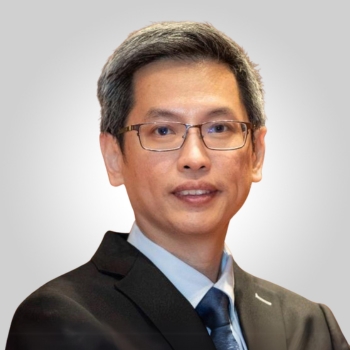
Christopher Lek, Director of Cyber Security at Nanyang Technological University (NTU), provided insights from an institutional standpoint, underscoring the paramount importance of cybersecurity within the education sector.
Cybersecurity is paramount in the education sector, given the vast amount of student data and study material within educational institutions. A data breach can severely impact an educational institute’s status and operations.
“Cybersecurity is immensely crucial in the education sector due to the large repository of students’ information and the critical research conducted by educational institutions,” Christopher shares. “Cyber attacks can have severe consequences, including disruption of learning, compromised student and staff data and reputational damage to institutions.”
As such, academic institutions are frequent targets of cyber threats, with malicious actors exploiting vulnerabilities through sophisticated methods like malware, ransomware, and phishing attacks.
A recent global survey between January and March 2023 revealed that 80% of school IT professionals experienced ransomware attacks in the past year, a significant increase from the 56% reported in 2022. These findings highlight the need for robust protective measures and heightened security awareness to safeguard educational institutions from cyber threats.
“Just like in other fields, the education sector faces various challenges that can hinder progress and disrupt operations if not carefully managed through strategic planning,” Christopher discloses.
Providing security awareness training to individuals in the education sector is imperative. This training enhances their knowledge and understanding of cybersecurity, reducing the risk of falling victim to malicious cyberattacks. Failure to adequately train students and staff can create vulnerabilities that cyber attackers exploit.
“A successful cyber attack can severely disrupt the learning process, leading to downtime and hindrances in educational activities. Insufficient security awareness increases the likelihood of such disruptions in educational institutions,” Christopher said. “In addition to affecting students’ educational programmes, institutions may face legal consequences if it is determined that the attack resulted from their negligence.”
Christopher believes that as educational leaders, it is essential to make safeguarding a fundamental pillar of institutions. This involves prioritising safeguarding in the school’s vision and mission, dedicating resources to support effective safeguarding measures, promoting a culture of transparency, and consistently reviewing and updating policies to comply with new regulations and meet the evolving needs of the school community.
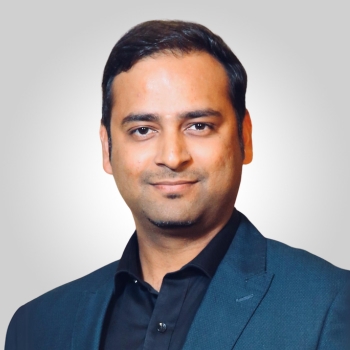
Varun Srivastava, APAC Head of the Cyber Security Operations Centre at UBS, echoed the sentiments expressed by Christopher and John but coming from a financial industry background, Varun expounded on the criticality of cybersecurity awareness, especially in economic contexts.
He stresses the necessity for individuals to remain vigilant and proactive in securing their financial data against cyber threats, highlighting the importance of regular monitoring, updating security measures, and practising safe online behaviours to mitigate risks effectively.
Moreover, as technology progresses, cybercriminals also evolve their methods, making it imperative for everyone to stay informed and implement necessary precautions to safeguard their financial assets.
“Cyber threats have evolved worldwide both in volume and sophistication. As we become more dependent on digital tools and online spaces, managing our information also needs to evolve,” Varun asserted.
UBS, a global financial services company, has implemented a comprehensive cybersecurity strategy to safeguard its clients’ sensitive information and ensure the security of its systems. This strategy includes various measures such as multifactor authentication, secure networks, hardened devices, regular data backups, and promoting awareness about social engineering tactics.
UBS also emphasises the importance of education and awareness among its clients, providing resources and guidelines for individuals to protect their accounts and information. Additionally, UBS has a dedicated Cyber & Information Security team tasked with managing the firm’s exposure to cyber threats and implementing proactive measures to detect, respond to, and prevent cyberattacks.
An expert in cybersecurity in the financial industry with deep experience, Varun shared some of the most common cyber-attack techniques. Phishing, where cybercriminals use deceptive emails or messages to trick individuals into revealing personal or confidential information, is a frequently used method. Another technique deploys viruses, malicious programmes that attach themselves to legitimate software, to access and exploit personal information on computers or mobile devices. Supply chain attacks involve targeting vulnerabilities in the system to intercept data during product or service delivery.
Cybercriminals also take advantage of vulnerabilities in networks such as poorly protected wireless connections or outdated software vulnerabilities.
“This is why we must be more aware of our protection,” Varun asserted, reiterating the critical need for heightened awareness regarding cybersecurity measures and the importance of taking proactive steps to safeguard personal and financial information against evolving cyber threats in today’s digital landscape.
In his closing, Varun offers some solutions as a starting point to protect against vulnerabilities, such as:
- Utilise multifactor authentication and unique passwords to enhance security. Biometric verification, like face recognition, can also be used alone or with other factors. Employ unique passwords for each platform and avoid saving passwords automatically. Strong passwords are best created as “passphrases,” which are long phrases that are easy to remember but difficult for hackers to guess. Change passwords regularly and consider using a trusted secure password manager.
- Secure the networks by changing the wireless network device’s default administrator password to a strong, unique password. Enable encryption on the Wi-Fi router, preferably WPA2, and limit access to trusted individuals.
- Reinforce device security by installing applications only from trusted sources, deleting unused or unknown-originating applications, keeping all applications and operating systems up to date, installing and regularly updating anti-malware software, avoiding connecting suspicious USB devices, and using mobile data instead of public Wi-Fi when on the go.
- Back up important files regularly to a secure cloud and an encrypted external hard drive, including family photos, financial records, and other essential documents.
- Be cautious of social engineering tactics used by criminals to deceive individuals into providing personal or financial information. Be careful when clicking on unfamiliar links online, and if someone receives a suspicious phone call, pause it and inform the caller that they will call them back using a known and validated phone number.

Clement Lee APAC Solution Architect Evangelist, Office of the CTO Check Point Software Technologies Ltd, underscored the persistent threat of cyberattacks, acknowledging that despite individuals’ proactive efforts to safeguard their data, attacks can still occur unexpectedly.
“As technology evolves, so do cyber threats. Emerging technologies invite attacks at every twist and turn,” Clement knows well. “Bad actor evolve their methods in line with the latest developments!”
This highlights the necessity of remaining vigilant and consistently updating security measures to effectively mitigate and protect against evolving threats in the cybersecurity landscape.
In the dynamic realm of cybersecurity, organisations face a continuous rollercoaster ride, requiring constant readiness at every turn. Staying abreast of the latest cyber trends and promptly adjusting defence strategies is paramount. Essential to this effort is routine vulnerability assessments and penetration testing (VAPT), which serve as cornerstones in upholding the security of digital infrastructure.
As technology advances, penetration testing must evolve to cover emerging technologies like the Internet of Things (IoT) and 5G networks. This includes delving into the security of everything from smart home devices to entire smart city infrastructures.
Organisations and individuals alike need to adopt a practical approach to cybersecurity, which includes implementing robust security solutions, staying informed about emerging threats, and educating users about safe online practices. By taking these steps, individuals and organisations can better defend against cyber threats and minimise the impact of potential attacks.
“The private and public sectors increasingly recognise the importance of a proactive stance,” Clement concluded. “Consequently, we can anticipate stricter regulations around regular testing, especially for critical infrastructure and sensitive data sectors.”
Technology Case Study: Why Data Security is Essential in Cyber Resilience and Ransomware Recovery
Cybercriminal activities pose significant threats to businesses worldwide by targeting sensitive data and disrupting operations. With the increasing prevalence of ransomware, cyber warfare, and sophisticated supply chain attacks, organisations must prioritise data protection measures to ensure business continuity and safeguard their assets.

To mitigate these risks, Soh Kiat Hiong, Head of Solutions Engineering, Asia at Rubrik explained that businesses should implement a comprehensive cybersecurity strategy that includes encryption, robust access controls, regular security assessments, and the development of an incident response plan. Organisations must also regularly update their software, deploy advanced cybersecurity tools, conduct regular backups of critical data, and collaborate with partners and vendors to enhance collective resilience against cyber threats.
Additionally, businesses must conduct thorough due diligence when selecting vendors, ensuring they adhere to stringent cybersecurity standards and regularly audit their security posture to identify and address vulnerabilities.
Employee awareness training and the implementation of robust email filtering systems are also essential defences against phishing attacks and social engineering tactics, further strengthening the organisation’s overall cybersecurity posture.
Cybersecurity remains a persistent and evolving challenge, particularly for public safety agencies. These organisations are increasingly vulnerable to high-profile cyberattacks, highlighting the urgent need for enhanced security measures.
The continuous emergence of new threats compounds this challenge, requiring agencies to remain vigilant and adapt their security protocols accordingly. The dynamic nature of cybersecurity standards adds another layer of complexity, as agencies must stay abreast of the latest developments and best practices to safeguard their systems and data effectively against evolving threats.
Traditional backup and recovery solutions need help to keep pace with the demands of modern infrastructure. Their lack of scalability, flexibility, and security features makes them ill-suited for protecting data across the diverse range of cloud and platform environments prevalent today. In contrast, modern data protection solutions, such as cloud backup and disaster recovery, offer a host of advantages that address these shortcomings:
- Scalability: Modern solutions can effortlessly scale to meet growing storage needs, eliminating the need for additional hardware or manual intervention.
- Accessibility: Cloud-stored data can be accessed from anywhere, simplifying data recovery in the event of a disaster or cyberattack.
- Security: Cloud-based solutions often boast enhanced security features like encryption and access controls, safeguarding data from unauthorised access and cyber threats.
- Cost-Effectiveness: Cloud backup can be more economical than traditional methods, as it eliminates the need for dedicated hardware and maintenance expenses.
- Disaster Recovery: Cloud backup serves as a reliable off-site backup, ensuring data remains intact in the face of natural disasters or other catastrophic events.
- Accountability: Modern solutions often provide a single vendor partner and support team, simplifying the process of identifying and resolving failures.
- Integration: These solutions can be seamlessly integrated with other cloud services, facilitating efficient data management across multiple platforms.
- Automation: Cloud-based solutions offer automation capabilities, reducing the need for manual intervention and minimising the risk of human error.
To embrace modern data protection, organisations should consider adopting cloud backup and disaster recovery solutions. Providers such as Rubrik offer comprehensive, scalable, and secure solutions that ensure business continuity in the face of modern cyber threats and infrastructure complexities.
Further, the recovery confidence in cyber incidents is essential yet often overlooked. Mitigation measures include an assumed breach mindset, impact reduction strategies, and regular testing of cyber recovery capability. Here are some strategies to consider:
- Assume breach mindset: This approach assumes that a breach is inevitable and focuses on preparing for the worst-case scenario. It involves identifying critical assets and data, implementing access controls, and establishing an incident response plan.
- Impact reduction strategies: These strategies aim to minimise the damage caused by a cyber incident. They include implementing firewalls and antivirus software, creating a patch management schedule, and continuously monitoring network traffic.
- Regular testing of cyber recovery capability: Regular testing helps ensure that organisations are prepared to recover from a cyber incident. This includes conducting cybersecurity risk assessments, creating a disaster recovery plan, and educating employees on cybersecurity best practices.
- Continuous monitoring and updating: Regularly monitoring the network and updating the software and hardware can help prevent vulnerabilities and reduce the risk of cyber incidents.
- Incident response plan: Having a comprehensive incident response plan in place is crucial for effectively managing cyber incidents. It should include procedures for detecting, responding to, and recovering from incidents.
- Physical security: Remember physical security. Conducting a cybersecurity risk assessment will help determine whether critical data and infrastructure are safe from a data breach or attack that occurs due to physical access to the business.
- Minimise the attack surface: Regularly assess the attack surface, which includes physical, digital, and social engineering vulnerabilities. This can help to identify and reduce any vulnerabilities that threat actors can exploit.
Soh emphasised the importance of continuous cybersecurity risk mitigation, noting that as new threats arise, it is crucial to remain informed and adjust strategies accordingly.
“Business and public safety agencies must adapt to the evolving cybersecurity landscape by implementing comprehensive strategies, adopting modern data protection solutions, and prioritising resilience-building measures,” Soh underscored. “Collaborative efforts, regular assessments, and continuous improvements are key to effectively mitigating cyber threats and ensuring business continuity in the face of modern cybersecurity challenges.”
Closing Remarks
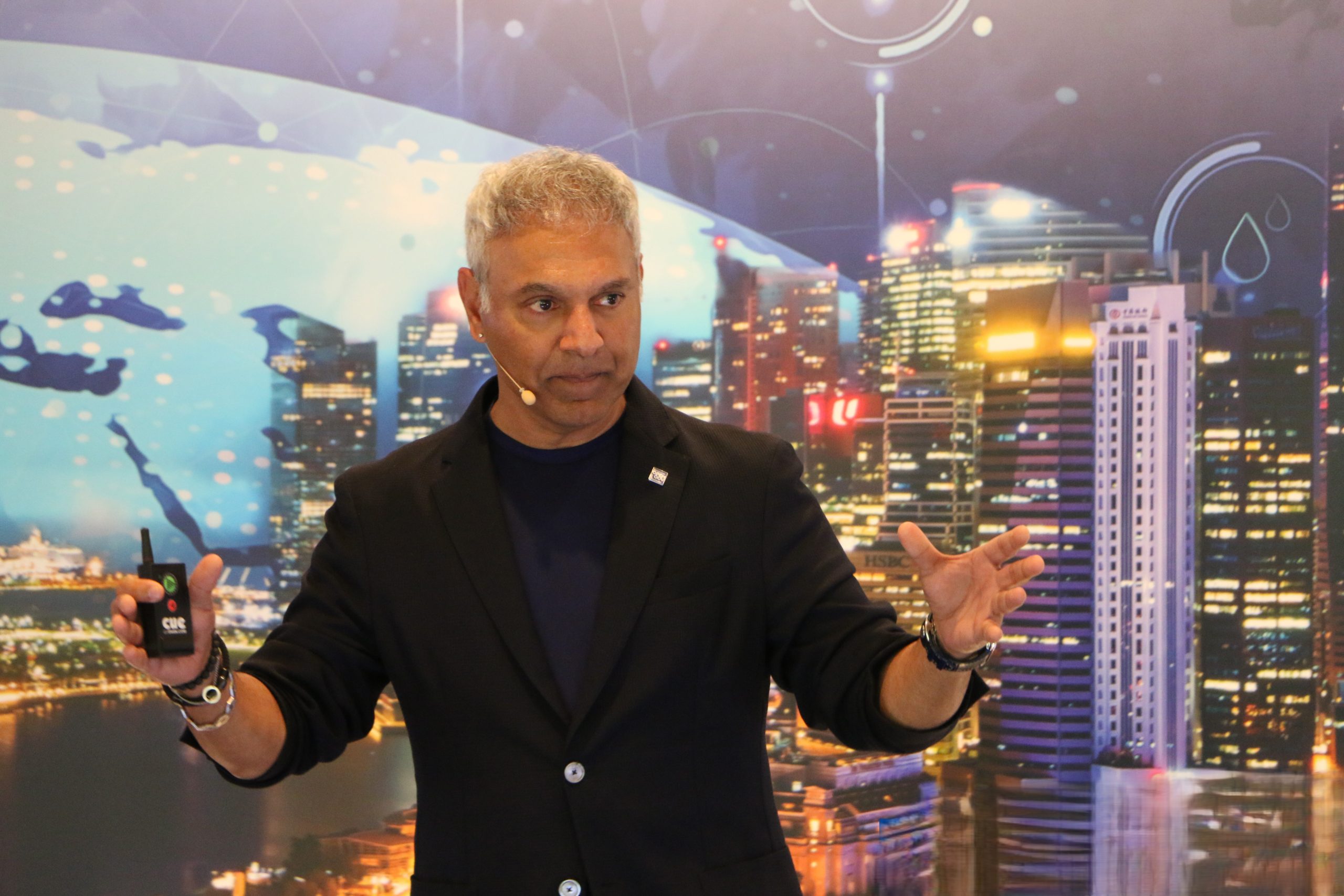 In recapping the discussions around Singapore’s digital transformation journey, Mohit was delighted with the outcome of the Singapore OpenGov Leadership Forum. He greatly appreciated the active participation and insights from the participants in exploring the critical role of digital technologies in driving innovation and enhancing efficiency across sectors.
In recapping the discussions around Singapore’s digital transformation journey, Mohit was delighted with the outcome of the Singapore OpenGov Leadership Forum. He greatly appreciated the active participation and insights from the participants in exploring the critical role of digital technologies in driving innovation and enhancing efficiency across sectors.
Reflecting on the engaging discussions and valuable insights shared by participants, Mohit expressed his satisfaction with the Singapore OpenGov Leadership Forum. He stressed the significance of the forum in highlighting the critical role of digital technologies in driving innovation and efficiency across sectors.
Mohit conveyed heartfelt appreciation to all participants, recognising their valuable contributions and engagement in discussions surrounding digitalisation in Singapore. The lively interactions, encompassing perceptive questions and impactful contributions, reflected a shared dedication to Singapore’s digital transformation journey and the continuous pursuit of leveraging technology for societal advancement.
Singapore’s trajectory toward becoming a Smart Nation was evident, as is its leadership in this domain. He was confident that commended the participants would robustly advance this transformation and reiterated the significance of collaborative efforts and innovative approaches in achieving Singapore’s digital vision.
In today’s digital landscape, Artificial Intelligence, and more recently Generative AI, are gaining significant prominence. These technologies are revolutionising various industries, offering unprecedented opportunities for innovation and efficiency.
“Artificial intelligence is a key driver of digital transformation in Singapore, offering opportunities to enhance efficiency, decision-making, and innovation across sectors,” Mohit asserts. “Its ability to quickly and accurately analyse vast amounts of data enables organisations to gain actionable insights and make informed decisions.”
The integration of AI in Singapore across sectors like healthcare, transportation, and finance signifies a significant step towards streamlining processes, delivering better services and ultimately elevating the standard of living for residents.
Singapore’s commitment to AI implementation is evident through substantial investments in research, development, and talent cultivation. Initiatives like the National AI Office and the AI Singapore programme facilitate collaboration among industry, academia, and government agencies, fostering advancements in AI research and development across key sectors.
The country is also focusing on building a strong talent pipeline in AI through initiatives like the AI Apprenticeship Programme and the SkillsFuture Study Award for AI. These plans aim to develop a skilled workforce capable of driving AI innovation in Singapore.
In closing, Mohit reiterated that Singapore is committed to promoting ethical AI practices and establishing guidelines and frameworks for the ethical use of AI. Initiatives such as the Model AI Governance Framework and the Advisory Council on the Ethical Use of AI and Data aim to ensure that AI is developed and used in a fair, transparent, and accountable manner.
“Cutting-edge technologies, like Artificial intelligence, GenAI and hybrid cloud strategies, are a key driver of digital transformation in Singapore, offering opportunities to enhance efficiency, decision-making, and innovation across sectors,” Mohit concludes. “I am confident that each of you will carry forward the insights gained today, integrating them into your organisations and forging partnerships that will collectively propel Singapore to greater heights.”



